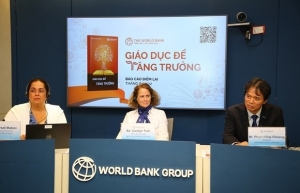Asia sails into headwinds of rate hikes, war and China slowdown
 |
| Krishna Srinivasan |
Waning momentum reflects three formidable headwinds, which may prove to be persistent:
• A sharp tightening of financial conditions as central banks in major advanced economies continue to raise interest rates to tame the fastest inflation in decades. Rapidly depreciating currencies could further complicate policy challenges.
• The Russia-Ukraine war, which continues to trigger a sharp slowdown of economic activity in Europe that will further reduce external demand for Asian exports.
• China’s strict zero-COVID policy and a deepening turmoil in its real estate sector, have led to an uncharacteristic and sharp slowdown in growth that in turn is weakening momentum in connected economies.
Inflation remains elevated
Inflation now exceeds central bank targets in most Asian economies, driven by a mix of higher global food and energy prices, currencies falling against the USD, and shrinking economic slack. Core inflation, which excludes volatile food and energy prices, has also risen, and its persistence must be closely monitored.
Meanwhile, the USD has strengthened against most major currencies as the Federal Reserve raises interest rates and signals further hikes to come. Most Asian emerging market currencies have lost between 5 and 10 per cent of their value against the dollar this year, while the yen has depreciated by more than 20. These recent depreciations have started passing through to core inflation across the region, and this may keep inflation high for longer than previously expected.
Policy for challenging times
Amid lower growth, policymakers face complex challenges that will require strong responses.
Central banks must persevere with their policy tightening until inflation falls back to target. Exchange rates should be allowed to adjust to reflect fundamentals and foreign monetary policy decisions. But if global shocks lead to a spike in borrowing rates unrelated to domestic policy changes and/or threaten financial stability or undermine the central bank’s ability to stabilise inflation expectations, foreign-exchange interventions may become useful for countries with adequate reserves, alongside macroprudential policies. Countries should urgently consider improving their liquidity buffers, including by requesting access to precautionary instruments from the fund for those eligible.
Public debt has risen substantially in Asia over the past 15 years—particularly in the advanced economies and China—and rose further during the pandemic. Fiscal policy should continue its gradual consolidation to moderate demand alongside monetary policy, focused on the medium-term goal of stabilising public debt.
Accordingly, measures to shield vulnerable populations from the rising cost of living will need to be well-targeted and temporary. In countries with high debt levels, support will need to be budget-neutral to maintain the path of fiscal consolidation. Credible medium-term fiscal frameworks remain imperative.
Beyond the short term, policies must focus on healing the damage inflicted by the pandemic and war. Scarring from the pandemic and the current headwinds are likely to be sizable in Asia, partly because of elevated leverage among companies that will weigh on private investment and education losses from school closures that could erode human capital if remedial measures aren’t taken today.
Strong international cooperation is needed to prevent greater geo-economic fragmentation and to ensure that trade aids growth. There is an urgent need for ambitious structural changes to boost the region’s productive potential and address the climate crisis.
Vietnam’s upbeat growth outlook is bucking the slowing trend elsewhere in Asia. Given robust growth through September, we revised up our 2022 growth forecast by a full percentage point to 7 per cent, and we cannot rule out even stronger growth.
However, given the projected slowdown in external demand and tighter financial conditions, we revised 2023 growth down to 5.8 per cent, which still contrasts with dimming prospects elsewhere and would be one of the fastest paces among Asia’s major economies. Inflation is expected to edge up before gradually returning below 4 per cent. Risks to growth are to the downside, and risks to inflation are to the upside.
Policies must be carefully calibrated, coordinated, and communicated to manage risks and alleviate policy trade-offs. In the current context, monetary policy should focus squarely on price stability.
A tighter policy stance should be considered if inflation pressures intensify and safeguarding financial stability remains a priority. Fiscal policies should remain flexible and be more targeted if inflation pressures build up.
*Krishna Srinivasan is director of the Asia Pacific Department at the IMF,
and Shanaka Peiris is division chief in the same department.
 | Vietnam's economic growth forecast at 7.5 pc in 2022: World Bank Vietnam’s GDP growth is forecast to expand 7.5 percent in 2022 and 6.7 percent in 2023, with resilient manufacturing and a robust rebound in services serving as the driving forces for economic recovery. |
What the stars mean:
★ Poor ★ ★ Promising ★★★ Good ★★★★ Very good ★★★★★ Exceptional
Related Contents
Latest News
More News
- Ho Chi Minh City hits $8.37 billion in FDI (December 29, 2025 | 08:28)
- Tax sector wraps up 2025 and sets priorities for next year (December 25, 2025 | 14:00)
- Heavy industries set for pilot greenhouse gas quotas (December 25, 2025 | 10:00)
- $250 million deal targets women-owned SMEs, sustainable agriculture (December 22, 2025 | 17:40)
- UOB sees Vietnam growth easing in fourth quarter (December 22, 2025 | 17:39)
- Government moves to establish International Financial Centre (December 21, 2025 | 21:00)
- Vietnam's IFC to target global investment flows (December 21, 2025 | 18:00)
- Ha Tinh breaks ground on major Vingroup industrial and energy projects (December 19, 2025 | 18:24)
- EVN launches major power infrastructure projects nationwide (December 19, 2025 | 18:17)
- VAL inaugurates second production line to meet domestic animal feed demand (December 19, 2025 | 16:37)

 Tag:
Tag:





















 Mobile Version
Mobile Version